During this jam-packed episode of Rocket Roundup, we cover several Chinese launches, SpaceX’s launch of NASA’s DART mission to hit an asteroid, and Russia’s launch of a military satellite. Plus, this week in rocket history, we look back at Pioneer 10’s encounter with Jupiter.
Podcast
Show Notes
China launches everything
- China launches new satellite (Xinhua)
- China launches new satellite for Earth observation (Xinhua)
- China’s Kuaizhou-1A rocket launches new satellite (Xinhua)
- CASC press release (Chinese)
- FH 2 info page (Gunter’s Space Page)
Rocket Lab Electron launches more BlackSky satellites
- Mission Overview (Rocket Lab via Archive Today)
- Launch video
Astra Rocket succeeds at putting payload into orbit
- LV0007 Media Kit (Astra)
- NASA TROPICS: Astra’s First Earth Science Mission (Astra)
- BlackSky constellation info page (Gunter’s Space Page)
- Launch video
Falcon 9 launches asteroid impact spacecraft
- DART Launch Moves to Secondary Window (NASA)
- PDF: DART press kit (JHUAPL)
- SMART Nav: Giving Spacecraft the Power to Guide Themselves (NASA)
- Launch video
Russian Soyuz launches military satellite
This Week in Rocket History: Pioneer 10’s encounter with Jupiter
- PDF: Pioneer: First to Jupiter, Saturn and Beyond (NMSU)
- Termination of Pioneer 10’s Mission (University of Iowa)
Transcript
Hello, and welcome to the Daily Space. I am Dr. Pamela Gay.
And I am Erik Madaus.
Most weekdays the CosmoQuest team is here putting science in your brain.
Today, however, is for Rocket Roundup.
A bunch of rockets launched during our week off, so we have a lot of catching up to do.
Let’s get to it, shall we?

Nine launches occurred since our last show, and China is responsible for almost half of them. Within a week’s time, China launched four satellites — two with Earth observation missions, one allegedly for military communications, and one experimental satellite. As usual, Chinese official media did not release much information about the satellites or their missions.
We do know that one of the launches introduced a new method for handling high upper-level winds on the Long March 3B, which is necessary for launching from Xichang in the winter. This new method improves reliability and launch capability by allowing the rocket to launch in high wind shear.
So there you go, you know pretty much everything we know about these four launches.
Now on to the rest of the launches!

On November 17 at 01:40 UTC, a Rocket Lab Electron launched the “Love At First Insight” mission from Launch Complex-1 at Mahia Peninsula in New Zealand. Onboard the bright red striped three-stage rocket were two satellites for the BlackSky Global commercial imaging constellation.
Rocket Lab advanced its efforts toward recoverable first-stage engines with this mission. After the depleted first stage separated from the second stage, which continued into orbit, the first stage headed back down into the atmosphere through “The Wall”, which Rocket Lab calls reentry without an engine burn to slow down. The booster was recovered from the water by a boat after a parachute-assisted splashdown. A helicopter was in the splashdown area to observe the booster coming down but did not attempt to catch it. The next Electron mission will be the first to attempt a catch mid-air for recovery and reuse. Rocket Lab has already begun to reuse some components from recovered stages but has yet to reuse complete stages.
Rocket Lab also introduced two new upgrades to the vehicle on this flight. They mentioned on air and on social media that the fairing was lengthened by 60 centimeters and had special modifications to the tip to accommodate the two satellites and their adapter. Keen-eyed viewers noticed that the second stage of the vehicle was also lengthened. This lets the first stage drop away at a lower velocity and have a gentler reentry, making it easier to refurbish and reuse. Falcon 9 makes the same compromise.
An hour after launch, the Electron kickstage released the satellites into their target orbit and then conducted one final burn to send it back into the atmosphere sooner rather than later. A proper deorbit would have sent it back into the atmosphere immediately; this burn just lowered the periapsis of the orbit closer to earth.
These satellites replace the two lost in the May 2021 Electron failure. Rocket Lab will launch four more satellites for BlackSky in two further launches. These satellites, Generation 2 of this particular design, weigh 56 kilograms, or two-thirds the mass of a kangaroo. The satellites contain a powerful Earth-facing telescope capable of resolving one-meter objects on the ground in four different spectral bands and a combined panchromatic mode.
From one southern New Zealand launch site, we now go to a launch from the extreme north.

On November 20 at 06:16 UTC, an Astra Rocket 3.3 launched from the Pacific Spaceport Complex in Kodiak Alaska for the LV0007 mission. This mission was Astra’s fourth attempt to place a dummy payload from the U.S. Space Force into polar orbit. A dummy payload is something simple, usually a metal cylinder or a tank of water with mass properties like a real satellite.
Two minutes fifty seconds after launch, the first stage shut down and separated. Fifteen seconds later, the second stage with its unusual two-lobe design ignited. About eight and a half minutes after the launch, the second stage engine shut down as a safe orbit was established. This made Astra the latest private company to successfully put something into orbit and the first to do so only five years after the company founding. However, there was no payload yeet. Instead, the flight computer sent a simulated payload deployment signal; the success of that action was indicated by a pair of green lights mounted on the dummy payload.
Rocket 3’s first real satellites will be NASA’s TROPICS mission sometime next year from Florida. That mission will actually be three dedicated launches on Rocket 3 vehicles for the TROPICS constellation, which need to go into widely spread orbits that its not practical to get to using just one rocket
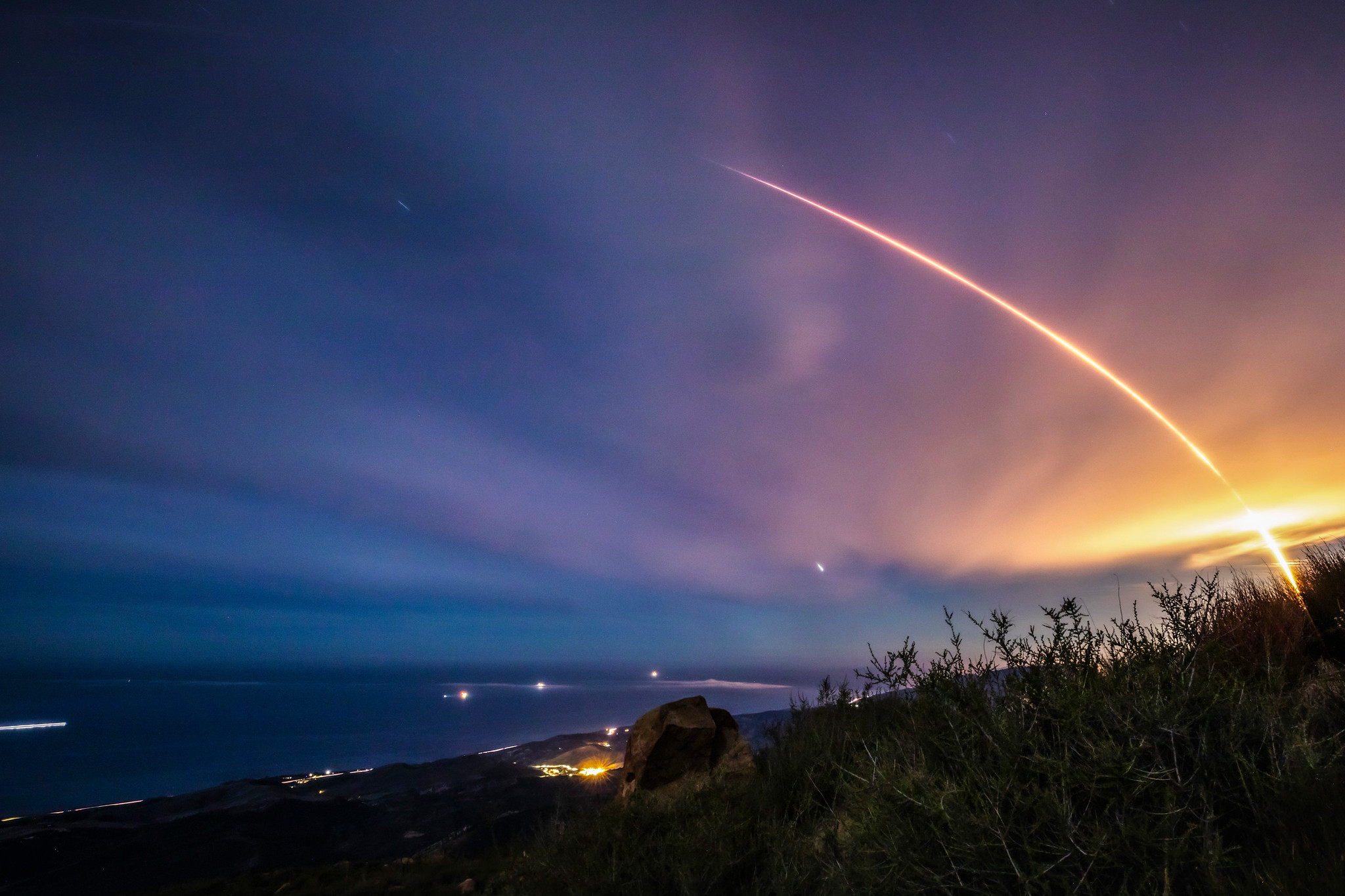
On November 24 at 06:21 UTC, Falcon 9 booster 1063 launched NASA’s Double Asteroid Redirection Test, or DART, from SLC-4E at Vandenberg Space Force Station in California. DART is SpaceX’s first proper interplanetary mission and the first interplanetary launch from SLC-4E.
Booster 1063 landed on the droneship Of Course I Still Love You (OCISLY) stationed several hundred kilometers downrange. This was only OCISLY’s second catch since being moved from Florida earlier this year.
After two upper-stage burns, DART was released to begin its several-month cruise out to the asteroid Didymos, arriving in September 2022. It is only 610 kilograms, about the mass of a Holstein cow, and takes up barely more than a meter of space in Falcon 9’s payload fairing. This tiny mass allows Falcon 9 to launch it south from California and still reach the required escape vector for its interplanetary mission despite losing the benefit of launching east from Florida and getting a kick from the Earth’s rotation.
DART’s mission is to impact Didymos’ moon, Dimorphos, which is unofficially known as Didymoon. This will, if all goes as planned, demonstrate that humanity can use the kinetic impact method, by which we mean the “wack an asteroid with a spacecraft method” to change the orbit of an asteroid so that it doesn’t hit the Earth.
Why do we need to go all the way out to an asteroid millions of kilometers from Earth and hit it instead of just simulating it on a computer? The answer is because our understanding of the physics of impacts on regolith (loose rock) is very limited. The strange physics of interacting rock and ejected material makes it very hard to model an impact.
Didymos is at no risk of impacting the Earth in the future. Its moon was selected because its quick orbit allows easy measurement of the effects of the impact, and those changes can’t increase the risk of this two-rock system impacting the Earth. The total shift in the orbital period will be about ten minutes, at most.
Before impact, DART will release the ESA-provided CubeSat LICIACUBE. It has two cameras with the delightful backronyms LUKE (LICIACube Unit Key Explorer) and LEIA (LICIACube Explorer Imaging for Asteroid), which will observe the impact of DART, the plume produced, and potentially even the impact crater before LICIACUBE itself impacts Dimorphos.
DART has just one instrument – DRACO (Didymos Reconnaissance and Asteroid Camera for Optical navigation). Derived from the LORRI instrument on New Horizons, it combines the roles of separate cameras for navigation and science imaging into one instrument. Like many other telescopes, both on Earth and in space, DRACO uses a Ritchie-Chrétien optical assembly with a CMOS sensor like the one in many phones. This combo gives it a 0.3-degree field of view of its surroundings.
DART also hosts several technology demonstration experiments, including SMART-Nav, an autonomous navigation system. It will ensure that DART impacts Dimorphos. This new system, assures DART can perform its mission, particularly the critical last hours of the flight, without human intervention.
Not all launches support science. Some support safety in rather militaristic ways.
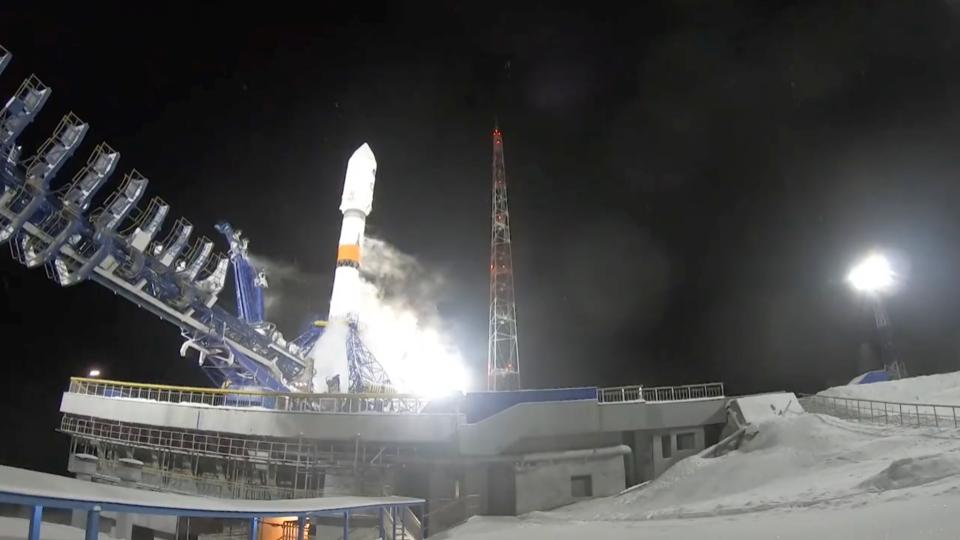
On November 25 at 01:09 UTC, a Russian Soyuz 2.1b/Fregat launched from the Plesetsk Cosmodrome carrying the Tundra 5L satellite for the Russian Ministry of Defense.
After several burns of the Fregat upper stage, the Tundra satellite was deployed into its Molniya orbit stretching from about 1,600 kilometers to about 35,000 kilometers at an inclination of 63.4 degrees to the equator. Tundra is the latest generation of missile early-warning satellite for the Russian government. The satellite has a powerful infrared telescope for this mission.
The satellite’s highly elongated Molnyia orbit was chosen because it lingers for a long time over the Northern Hemisphere before racing through the other parts of its orbit. The extreme north isn’t accessible from geostationary satellites, and this weird orbit is the next best thing for communications, weather, and, well, spy sats. The U.S. positions intelligence satellites in the same orbit to spy on the Russians. One more Tundra satellite will be launched next year, completing the constellation.
This Week in Rocket History
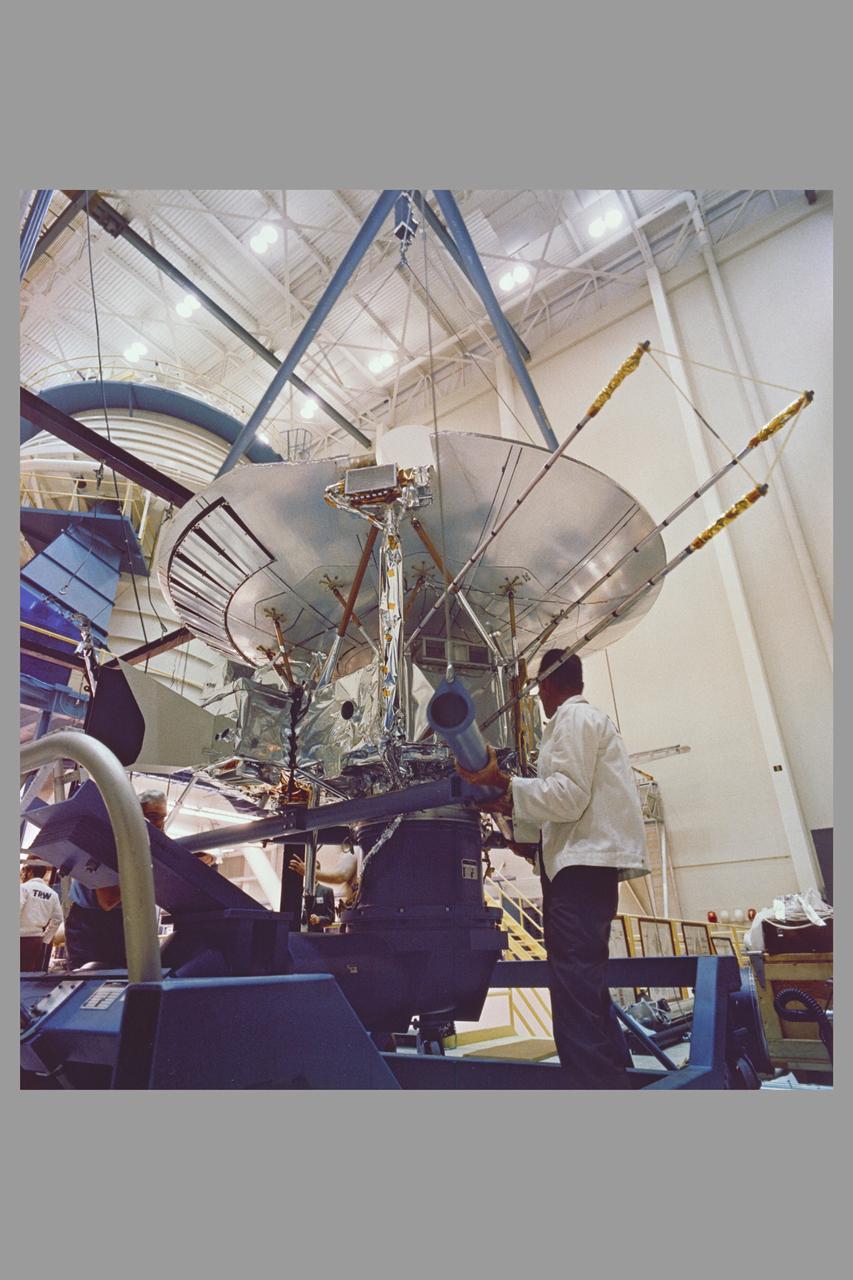
This week wasn’t just a busy one for modern launches; it historically also had a lot going on and picking a topic for This Week in Rocket History wasn’t going to be easy. Rather than make a decision, we asked our supporters on Patreon to pick for us, and they picked Pioneer 10.
If you want to help select stories the next time we need help or see what stories weren’t picked this week, join our Patreon.
Pioneer 10 was the first mission to any of the outer planets and would fly by Jupiter and continue on out of the solar system. To fulfill its science goals, Pioneer 10 would get very close to Jupiter and investigate its radiation. It needed to determine how close a spacecraft could safely get to Jupiter so mission planners could plan further missions using Jupiter’s gravity assists. One such mission was Pioneer 11, launched a year after Pioneer 10, which would go from Jupiter to Saturn via a powerful gravity turn over Jupiter’s poles.
Pioneer 10’s launch window and trajectory were optimized to make sure that the planet was not in conjunction with Earth; that is, Jupiter being behind the sun and out of contact with the Earth during the encounter. A compromise was the spacecraft itself would have a solar conjunction 300 days after launch.
This trajectory for Pioneer 10 carried with it the risk that the spacecraft would be fried by radiation and not able to continue its mission. Pioneer 10 traveled through the Jupiter system very quickly to avoid being exposed to too much radiation. The trajectory was also timed so that Pioneer 10 would pass in the direction of the planet’s rotation and see it illuminated best before close approach and a crescent after the encounter.
Pioneer 10 launched March 2, 1972, reaching a speed of over 50,000 km/hr after separation from the Atlas rocket’s upper stage. This made it the fastest man-made object to date. Pioneer 10 passed the orbit of the Moon eleven hours after launch. Ten days after liftoff, all instruments were turned on.
On July 15, 1972, Pioneer 10 became the first spacecraft to pass through the asteroid belt. Scientists were a little concerned that it would hit an asteroid or small rock fragment in the belt, but it emerged unscathed in February 1973. Pioneer 10 told us the asteroid belt is largely empty; this isn’t Star Wars.
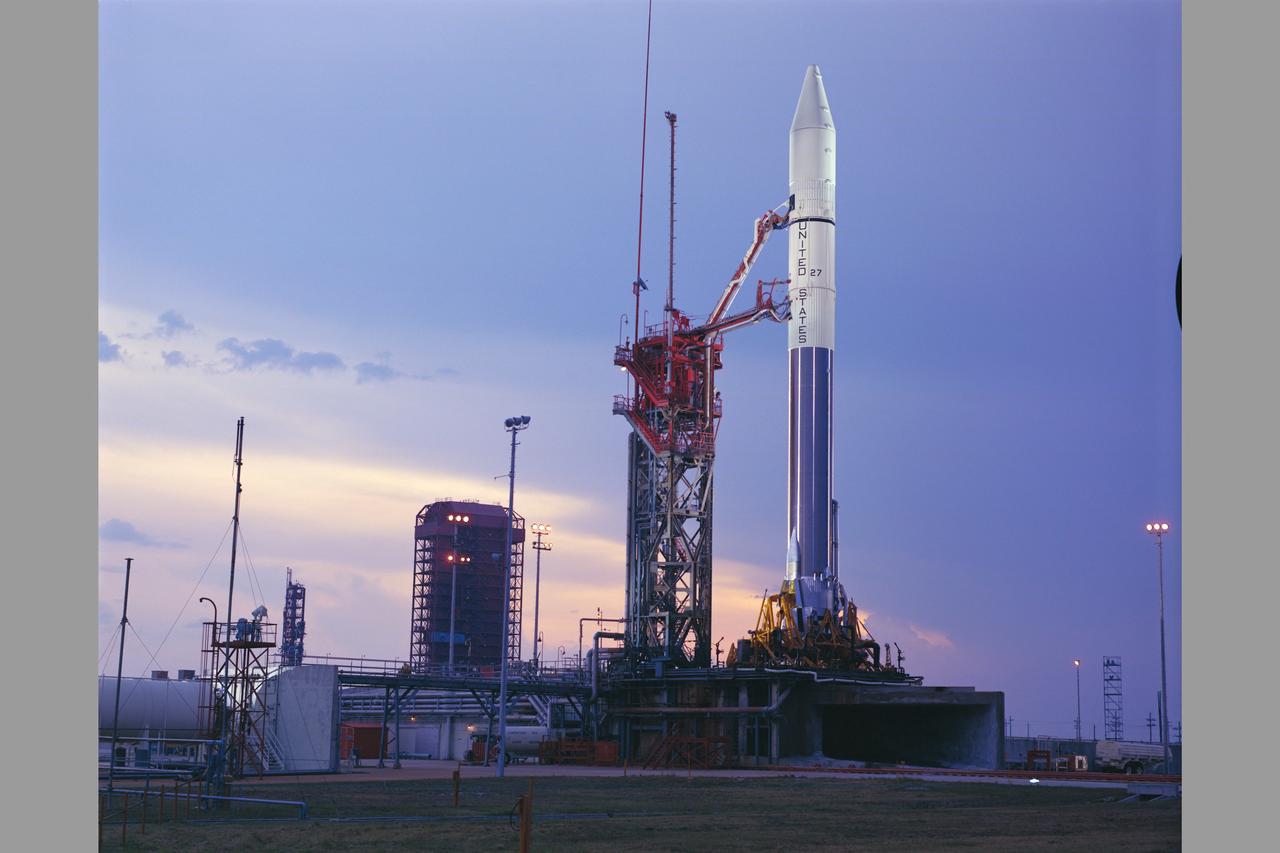
Leaving the asteroid belt behind, mission engineers began to prepare it for the encounter with Jupiter that would happen in December 1973. Those preparations were complete by November 6, when Pioneer 10 passed the orbit of the farthest moon of Jupiter, entering the Jupiter system only one minute behind the pre-launch schedule. Engineers were on shift 24/7 through the encounter. On its way in, Pioneer 10 discovered that Jupiter’s magnetopause, the boundary between the solar wind and its magnetic field, was 96 Jupiter radii out and that the poles of the field are reversed relative to Earth.
During the encounter, all of the spacecraft’s computer systems functioned properly despite the intense radiation environment of Jupiter. Only a few pictures were lost when the spacecraft’s computer sent bad commands to the camera under the influence of radiation. These lost images, unfortunately, included one major scientific objective: close-up imaging of Io. Pioneer 10 did discover that Io was 23% heavier than previously estimated. Because Io passed between Pioneer 10 and Earth, Pioneer could radio home to Earth and see distortions that indicated Io has an ionosphere.
The camera on Pioneer 10 took pictures with red and blue filters for the best science value. To produce nice-looking images for the public, red and blue were used to create green for a full RGB image. For their efforts showing images from the spacecraft to the public in near real-time, the Pioneer program received an Emmy Award.
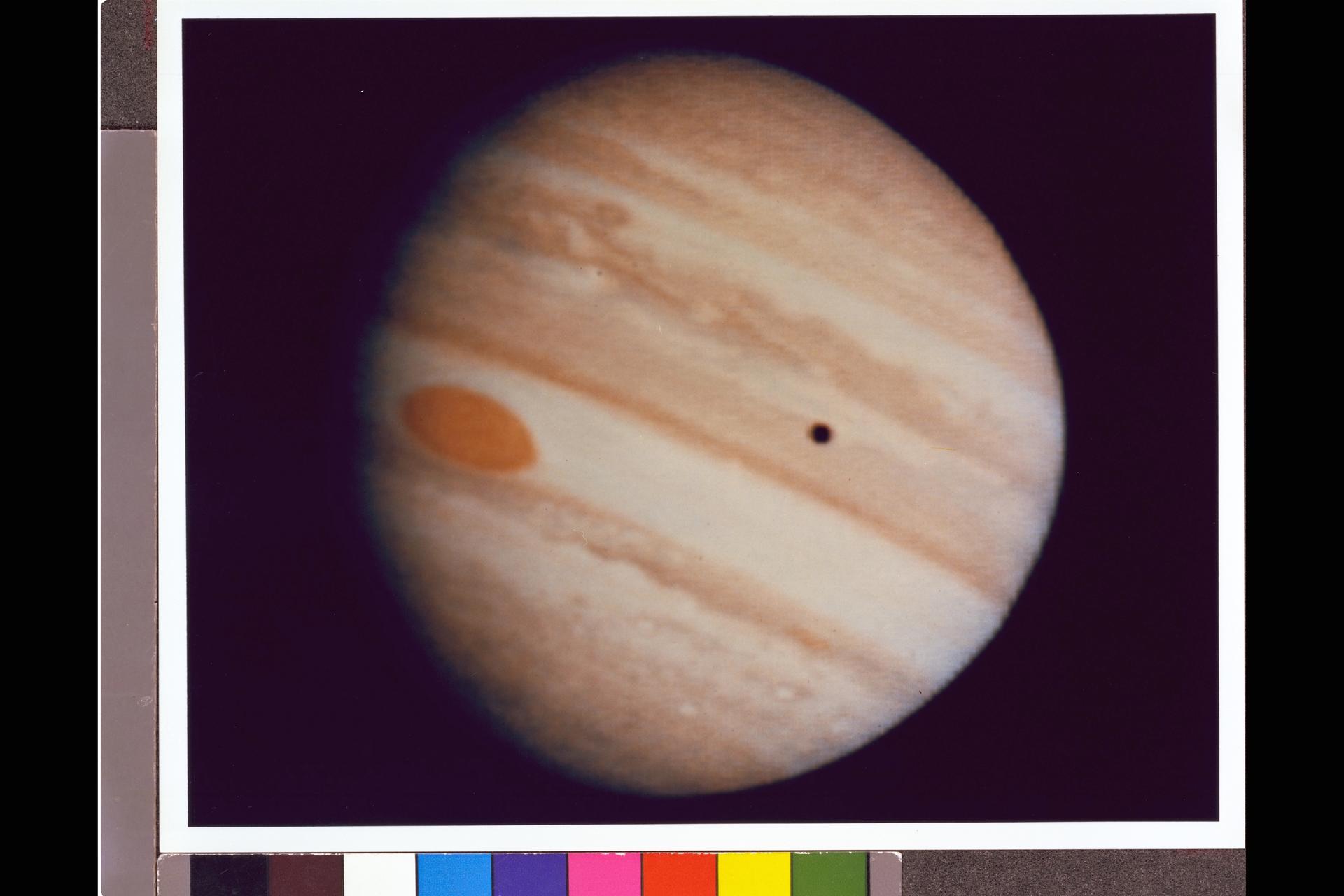
As it headed further into the closest approach, Pioneer 10 began to break down. The cosmic ray detectors and interplanetary electron detector were saturated with radiation a day before approach. Engineers switched on special replacement instruments designed to work in Jupiter’s environment, and these worked. At the closest approach at 10 am UTC on December 3, the camera got more bad commands and some images were lost, but the spacecraft still took pictures of the Great Red Spot. Then Pioneer 10 passed between Jupiter and Earth. The spacecraft sent back its first image after periapsis, and it was normal. Pioneer 10 had achieved its primary mission: determining if a spacecraft could survive a trip through Jupiter’s radiation belts.
Thanks to Pioneer 10’s efforts, Pioneer 11, Voyager 1, and Voyager 2 all made successful Jupiter flybys later in the 1970s. Pioneer 10 crossed the orbit of Pluto and out of the solar system in 1990. The last successful contact with the spacecraft was in April 2002 at a distance of 80.2 astronomical units. One more contact was attempted in January 2003, but it was unsuccessful because the transmitter no longer had enough voltage to function thirty years after launch.
While silent, this little mission continues its journey into the great beyond.
Statistics
To wrap things up, here’s a running tally of a few spaceflight statistics for the current year:
Toilets currently in space: 8: 4 installed on ISS, 1 on the Crew Dragon, 1 on the Soyuz, 1 on the Shenzhou, and 1 on Tianhe.
Total 2021 orbital launch attempts: 122, including 9 failures
Total satellites from launches: 1591
We keep track of orbital launches by where they launched from, also known as spaceport. Here’s that breakdown:
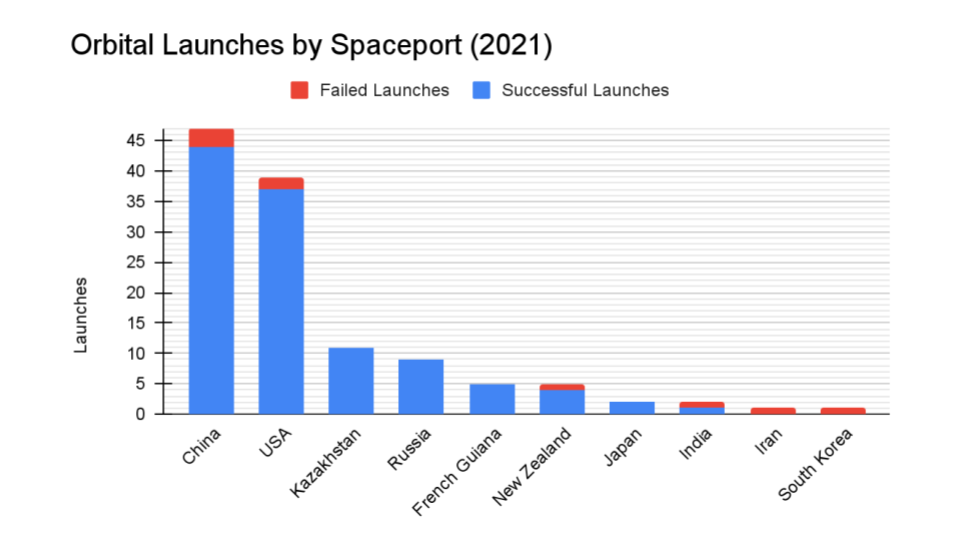
China: 47
USA: 39
Kazakhstan: 11
Russia: 9
French Guinea: 5
New Zealand: 5
Japan: 2
India: 2
Iran: 1
South Korea: 1
Your random space fact is that this week during the reorientation of the ISS for the docking of the Prichal module one of the flight controllers in Houston noticed that The Moon was passing through the field of one of the cameras on the outside of the station. He manually controlled its exposure and zoom to take a picture. This isn’t normally possible because the camera is on a fixed mount aimed at the Earth.
This has been the Daily Space.
You can find more information on all our stories, including images, at DailySpace.org. As always, we’re here thanks to the donations of people like you. If you like our content, please consider joining our Patreon at Patreon.com/CosmoQuestX.
Credits
Hosts: Pamela Gay and Erik Madaus
Writers: Gordon Dewis, Pamela Gay, Erik Madaus, and Annie Wilson
Audio and Video Editing: Ally Pelphrey
Content Editing: Beth Johnson
Executive Producer: Pamela Gay
Intro and Outro music by Kevin MacLeod, https://incompetech.com/music/


 We record most shows live, on Twitch. Follow us today to get alerts when we go live.
We record most shows live, on Twitch. Follow us today to get alerts when we go live.